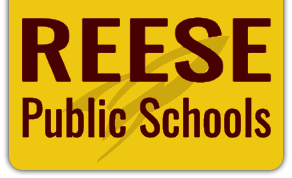SERIES 5000: STUDENTS, CURRICULUM, AND ACADEMIC MATTERS
5200 Student Conduct and Discipline
5207 Anti-Bullying Policy
All types of bullying, including cyberbullying, without regard to subject matter or motivating animus, are prohibited.
A. Prohibited Conduct
1.Bullying, including cyberbullying, a student at school is prohibited. Bullying is any written, verbal, or physical act, or electronic communication that is intended to or that a reasonable person would know is likely to harm one or more students directly or indirectly by doing any of the following:
a. substantially interfering with a student’s educational opportunities, benefits, or programs;
b. adversely affecting a student’s ability to participate in or benefit from the District’s educational programs or activities by placing the student in reasonable fear of physical harm or by causing substantial emotional distress;
c. having an actual and substantial detrimental effect on a student’s physical or mental health; or
d. . causing substantial disruption in, or substantial interference with, the District’s orderly operations.
2. Retaliation or false accusations against the target of bullying, anyone reporting bullying, a witness, or another person with reliable information about an act of bullying, are prohibited.
B. Reporting an Incident
If a student, staff member, or other person suspects there has been a bullying incident, the person must promptly report the incident to the building principal or designee, or to the Responsible School Official(s), as defined below.
A report may be made in person, by telephone, or in writing (including electronic transmissions). If a bullying incident is reported to a staff member who is not the building principal, designee, or a Responsible School Official, the staff member must promptly report the incident to the building principal, designee, or a Responsible School Official.
To encourage reporting of suspected bullying or related activities, each building principal, after consulting the Responsible School Official(s), will create, publicize, and implement a system for anonymous reports. The system must emphasize that the District’s ability to investigate anonymous reports may be limited.
Complaints that the building principal has bullied a student must be reported to the Superintendent. Complaints that the Superintendent has bullied a student must be reported to the Board President.
C. Investigation
All bullying complaints will be promptly investigated. The building principal or designee will conduct the investigation, unless the building principal or Superintendent is the subject of the investigation. If the building principal is the subject of the investigation, the Superintendent or designee will conduct the investigation. If the Superintendent is the subject of the investigation, the Board President will designate a neutral party to conduct the investigation.
A description of each reported incident, along with all investigation materials and conclusions reached, will be documented and retained.
D. Notice to Parent/Guardian
If the investigator determines that a bullying incident has occurred, the District will promptly notify the victim’s and perpetrator’s parent/guardian in writing.
E. Annual Reports
At least annually, the building principal or designee, or the Responsible School Official, must report all verified bullying incidents and the resulting consequences, including any disciplinary action or referrals, to the Board. The District will annually report incidents of bullying to MDE in the form and manner prescribed by MDE.
F. Responsible School Official
The Superintendent is the “Responsible School Official” for this Policy and is responsible for ensuring that this Policy is properly implemented. This appointment does not reduce or eliminate the duties and responsibilities of the building principal or designee as described in this Policy.
G. Posting/Publication of Policy
The Superintendent or designee will ensure that this Policy is available on the District’s website and incorporated into student handbooks and other relevant school publications. The Superintendent or designee will submit this Policy to the MDE within 30 days after its adoption.
H. Definitions
1.“At school” means in a classroom, elsewhere on school premises, on a school bus or other school-related vehicle, or at a school-sponsored activity or event whether it is held on school premises. “At school” also includes any conduct using a telecommunications access device or telecommunications service provider that occurs off school premises if the device or provider is owned by or under the control of the District.
2. “Telecommunications access device” means any of the following:
a. any instrument, device, card, plate, code, telephone number, account number, personal identification number, electronic serial number, mobile identification number, counterfeit number, or financial transaction device defined in MCL 750.157m (e.g., an electronic funds transfer card, a credit card, a debit card, a point-of-sale card, or any other instrument or means of access to a credit, deposit, or proprietary account) that alone or with another device can acquire, transmit, intercept, provide, receive, use, or otherwise facilitate the use, acquisition, interception, provision, reception, and transmission of any telecommunications service; or
b. any type of instrument, device, machine, equipment, technology, or software that facilitates telecommunications or which is capable of transmitting, acquiring, intercepting, decrypting, or receiving any telephonic, electronic, data, internet access, audio, video, microwave, or radio transmissions, signals, telecommunications, or services, including the receipt, acquisition, interception, transmission, retransmission, or decryption of all telecommunications, transmissions, signals, or services provided by or through any cable television, fiber optic, telephone, satellite, microwave, data transmission, radio, internet based or wireless distribution network, system, or facility, or any part, accessory, or component, including any computer circuit, security module, smart card, software, computer chip, pager, cellular telephone, personal communications device, transponder, receiver, modem, electronic mechanism or other component, accessory, or part of any other device that is capable of facilitating the interception, transmission, retransmission, decryption, acquisition, or reception of any telecommunications, transmissions, signals, or services.
3. “Telecommunications service provider” means any of the following:
a. a person or entity providing a telecommunications service, whether directly or indirectly as a reseller, including, but not limited to, a cellular, paging, or other wireless communications company or other person or entity which, for a fee, supplies the facility, cell site, mobile telephone switching office, or other equipment or telecommunications service;
b. a person or entity owning or operating any fiber optic, cable television, satellite, internet based, telephone, wireless, microwave, data transmission, or radio distribution system, network, or facility; or
c. . a person or entity providing any telecommunications service directly or indirectly by or through any distribution systems, networks, or facilities.
Legal authority: MCL 380.1310b; MCL 750.157m, 750.219a
Date adopted: 08/09/2021
Date revised:


